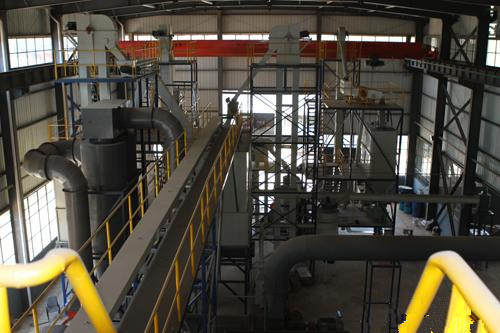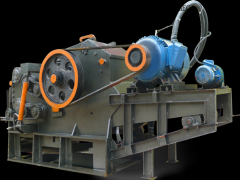Biomass Pellet Market and Production across Latin America
Brazilian Pellet Market and Production
The main use of solid/woody biomass in Brazil is for the production of charcoal. According to the Brazilian association industry biomass and renewable energy (ABIB, 2011), there were 10 wood pellet plants in Brazil, using pine or eucalyptus wood (residues) as feedstock, which had a reported capacity of about 320 kilotons per year (Brazil ABIB, 2011). However, to our knowledge, these were solely for domestic use; no wood pellets had been exported until a few years ago. In comparison, Brazil does have much larger wood briquette production capacity: 2.8 million tons according to Brazil ABIB (2011). However, according to several press releases (Suzano 2010, 2011), Suzano Papel e Celulose negotiated with the Brazil's Alagoas state authorities about the construction of one million tons wood pellet plant. The production, which reportedly started in 2013, is based on forests planted exclusively for use in energy generation. The management for this segment is based on the selection of specific eucalyptus clones, planting a greater number of trees per hectare (“energy management”), and a reduced harvest cycle, from two to three years (eucalyptus planted for pulp and paper has a cycle of approximately seven years).Suzano Renewable Energy’s goal is to achieve an annual capacity of three million tons of pellets by the end of 2014.To make the project feasible, the company estimates an investment of approximately US$ 800 million. Downey (2011) reported that two more plants might follow in 2018-2019. If these plants are to be realized, this would mean that Brazil would become a major producer and exporter of wood pellets to Europe. In august 2011, it was reported that GT Power Ltd. and Suzano Papel e Celulose S.A. have concluded a non-binding Memorandum of Understanding for the supply of biomass fuel for MGT's 300MW Tees Renewable Energy Plant project. First deliveries are expected in 2014. In addition, Timber Creek Farms announced that they were going to build a wood pellet manufacturing facility near Pien, Brazil. The plant as a matter of fact possesses a capacity of 90,000 tons, and started running in the first quarter of 2012. The wood pellets will be traded by Cellmark Energy, and are likely to be shipped to Europe for industrial use.

READ: GET TO KNOW BIOMASS PELLET MACHINE
Chilean Pellet Fuel Production and Market
In the past years, three wood pellet mills had existed in Chile, but only two of them were operating until a few years ago:
- The company Ecopellets, situated close to Santiago de Chile, had two mills(from Andritz & La Meccanica), and was established about 6-8 years ago. The theoretical capacity of this plan was about 6 tons/hour, or about 30,000 tons per year, but this production level was never fully realized. The feedstock used was urban waste wood form Santiago. The wood pellets were destined for the domestic market. However, as this market was too small, the company recently ceased production.
- Andes biopellets, situated close to Santa Barbaras, belongs to a Swedish investor. It is located next to a saw mill, and uses saw dust as raw material. Bioenergy International (2011) reported a production capacity of 50,000 tons.
- The third wood pellet planned is run by Ecomas, a joint venture of the Chilean company Promasa and the Japanese Somitomo corporation. It is situated in the center-south of Chile, near the city of Los Angeles. The capacity mentioned by Bioenergy International (2011) was 10,000 tons. The company has a marketing strategy to sell wood pellet boilers to small-scale industries, and deliver pellets to them with long-term contracts.

READ: HOW TO START A PELLET FUEL PRODUCTION LINE
Pellet Fuel of Argentina
No wood pellet plants have been reported so far in Argentina. While Uasuf (2010) reported that there may be significant potential to use wood residues from the wood processing industry in a number of provinces (especially Corrientes), and no reports on production of wood pellets have been found. Therefore, wood pellet production will be quite a promising and burgeoning business across the country. As of now, more wood and timber suppliers have put their focus on the utilization of wood sawdust and saw shavings in a recycled manner. Besides, they have pinpointed the potentially huge domestic and brisk European market in Europe, of course more and more Argentinean people become eager to start a relatively small scale pellet fuel production plant to turn the waste material with potentially high value into pellet fuel possessing high thermal efficiency and environmentally-friendly attribute.
-----------------------------------------------------------------------------------------------------------------------------
News
- Small Pellet Machine Manufacturer-Kingman
- Application of Wood Pellets and Use of Biomass Pellets
- From Fossil Fuel into Biomass Pellet Fuel
- Biomass Pellet Making Machines Market
- Applying of pellet stoves for home use
- Highland pellets to build $130 million facility in arkansas
- How to deal with the blocked hammer mill
- How to Make Wood Pellets with Sawdust
- The government policy promotes the development of biomass fuel
- Market analysis of biomass pellet fuel
- Strategic positioning of renewable energy
- Biomass energy has pass through the pre assessment
- The key point of deep processing of biomass pellet
- Harbin is promoting the development of biomass machinery
- The development of biomass formation technology I
- The development of biomass formation technology II
- Biomass energy industry is now going full tilt in 2015
- Rapid increasing demand of sawdust pellet on the market
- Pellet fuel market in EU
- Chinese Biomass Energy Conference held in Beijing
- Future market development of straw pellet mill
- Peanut Shell Pellet Mill Makes High Quality Pellets
- The utilization of straw is only 5%, biomass energy needs our attention!
- Corn straw pellet machine relieves the tight supply of fuel energy
- Reasons for loose or not forming of biomass pellet mill





